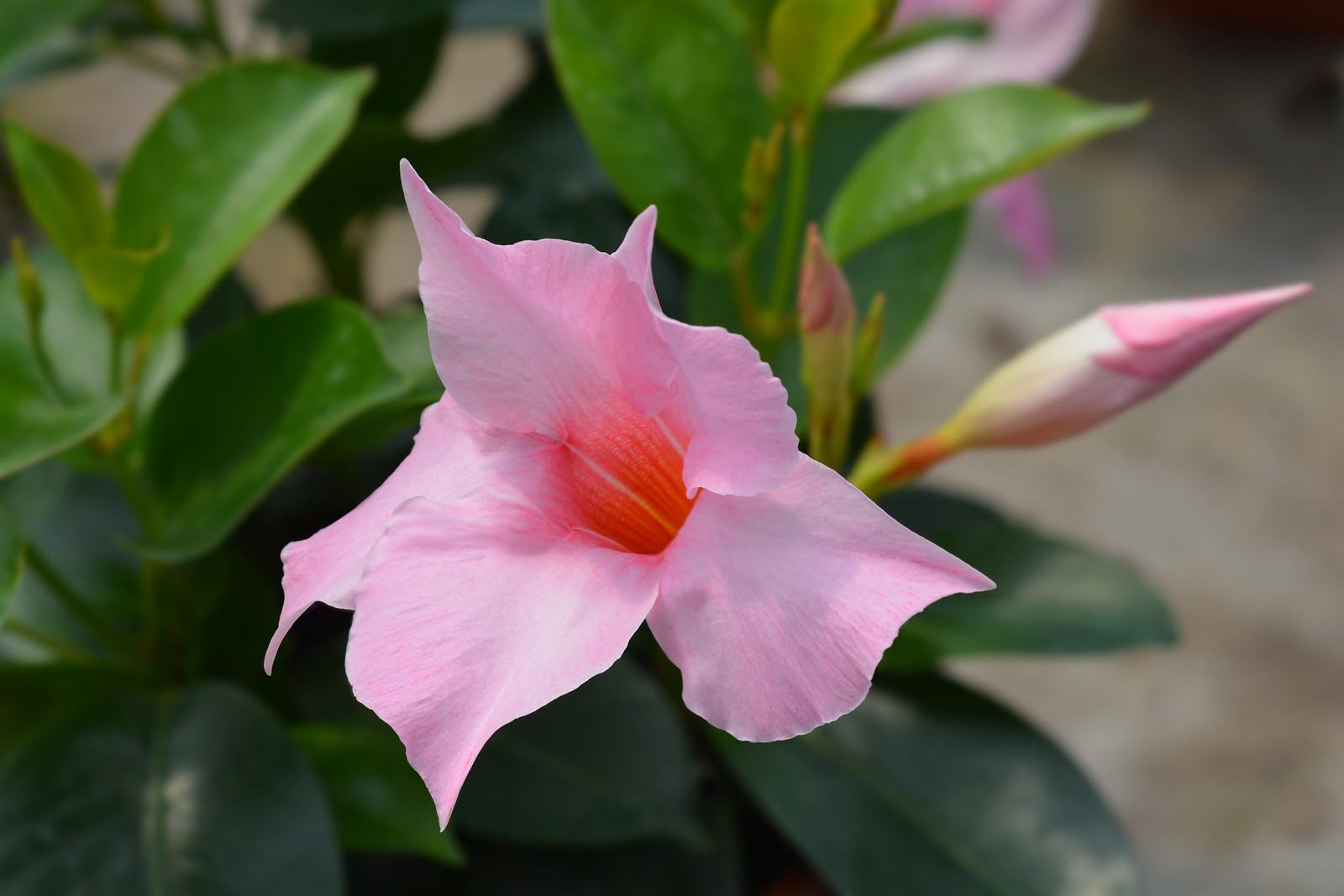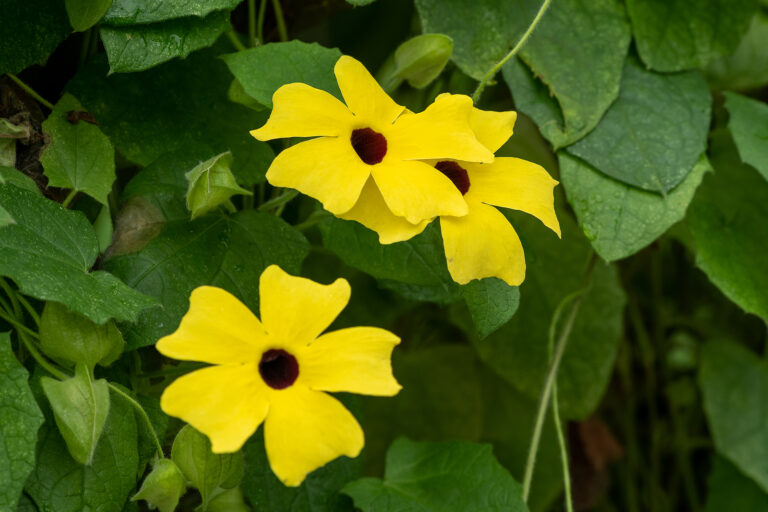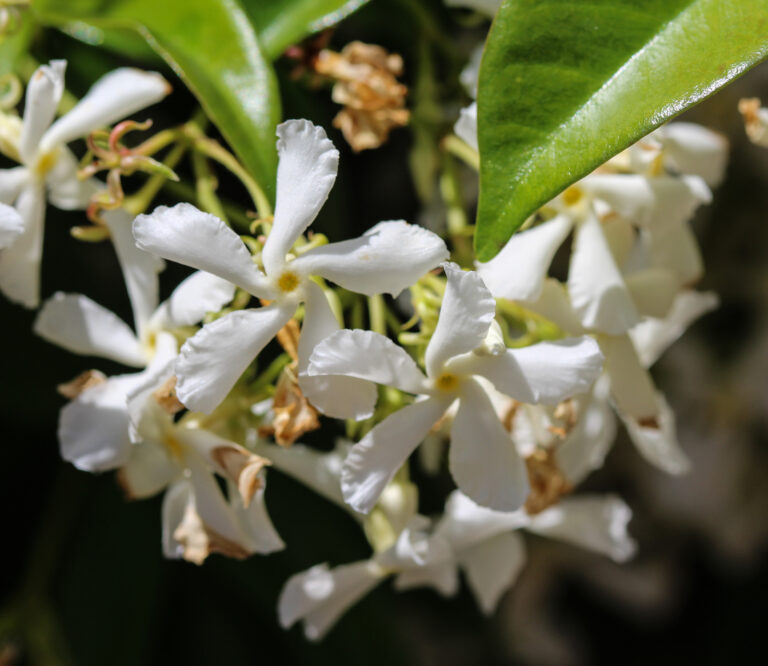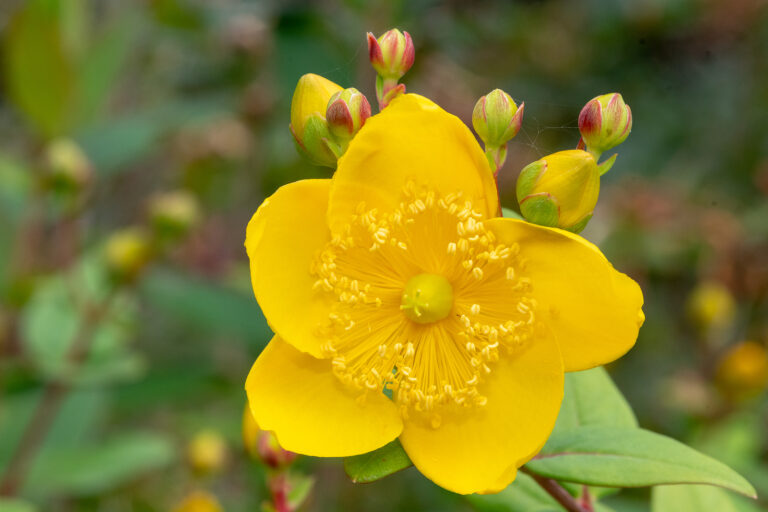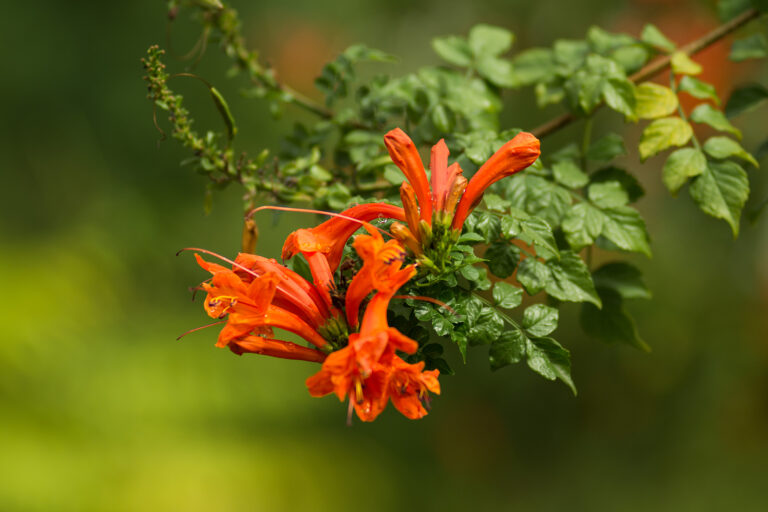How to Grow Mandevilla
Mandevilla is a woody-stemmed twining climber with funnel-shaped to tubular flowers each with five broad, spreading petals. It is an excellent choice for growing on a pergola, arch, or trellis.
There are about 120 species of Mandevilla native to Central and South America.
Mandevilla grows in full sun to light shade. In hot regions, grow Mandevilla where they get dappled shade during the hottest part of the day. They grow best in average to rich, well-drained soil.
In cold winter regions, grow Mandevilla in containers that can be brought indoors in winter. The indoor temperature for Mandevilla should be at least 65°F. Otherwise, treat them as annuals. Overwintered plants should be cut nearly to the ground in spring; they will produce new shoots and flowers in the same year.
Grow Mandevilla from seed started in spring or from cuttings taken in late spring or summer.
Get to know Mandevilla
- Plant type: Annual or perennial long-blooming vine
- Growing Zones and range: Zones 2-11; grow as an annual in Zones 2-7; grow as a perennial in Zones 8-10.
- Hardiness: Tender
- Height and width: 3 to 30 feet (1-9m) long vines with support depending on the variety
- Foliage: Narrow, heart-shaped leaves; leaves have small glands at their bases or along their midribs; stems contain a milky latex
- Flowers: Clusters of funnel-shaped fragrant flowers bloom in clusters; each flower has 5 spreading petals
- Bloom time: Summer
- Uses: Grow on trellis, arbor, fence; use as a screen
- Common name: Mandevilla
- Botanical name: Mandevilla spp.; syn. Diplandnia
- Family: Apocynaceae
- Origin: Tropical Central and South America
Where to plant Mandevilla
- Plant Mandevilla in full sun to light shade.
- Grow Mandevilla in humus-rich to average, well-drained soil.
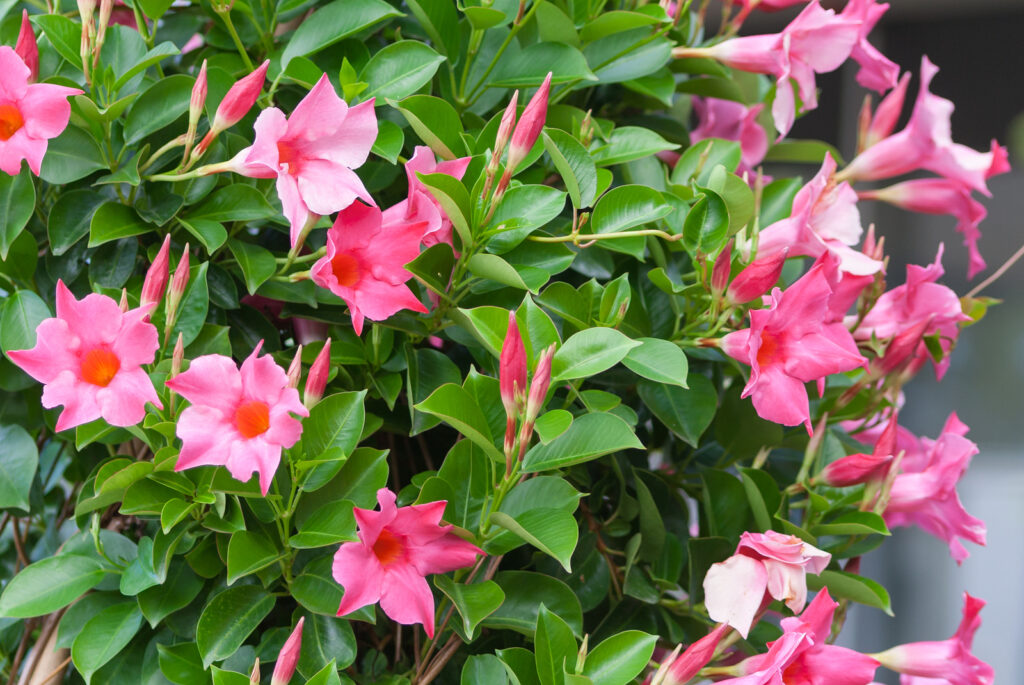
When to plant Mandevilla
- Set mandevilla in the garden in spring; work aged compost into the soil at planting time.
Planting and spacing Mandevilla
- Space mandevilla 3 or more feet apart depending on variety.
How to water and feed Mandevilla
- Mandevilla needs moderate moisture; keep the soil evenly moist.
- Work aged compost into the soil at planting time.
- Fertilize container plants every 2 to 3 weeks with a liquid fertilizer.
- Work a slow-release into the soil at planting time and also each spring for perennial plants.
Mandevilla care
- Mulch around Mandeville to conserve soil moisture and keep the roots cool.
- Provide support for vining Mandevilla.
- Container grown Mandevilla can be overwintered in a garage or protected spot.
- Mandevilla blooms on new wood, so where perennial, cut back by about one-third in late winter or early spring.
Growing Mandevilla as a houseplant
- Mandevilla x amabilis can be grown as a houseplant.
- Grow Mandevilla where the temperature is high, humidity is high, and light is bright.
- Grow in an all-purpose, soilless medium, and allow it to dry slightly between waterings.
- Fertilize Mandevilla every two weeks when the plant is growing or flowering.
- After the plant has flowered, cut it back to control its size, which is best kept at about 3 feet indoors.
Mandevilla common problems
- Mandevillas are prone to spider mites, whiteflies, and mealybugs.
- Mandevilla is susceptible to leaf spots, gray mold, and root rot..
Mandevilla propagation
- Root softwood cuttings in late spring or semi-ripe cuttings with bottom heat in summer.
Mandevilla varieties to grow
- Mandevilla x amabilis. Grows to 22 feet in tropical regions; woody-stemmed twining climber, elliptic or oblong deep green leaves with short points; racemes of up to 20 narrowly funnel-shaped glowing pink flowers. Cultivars include: ‘Alice du Pont’ is pink and most commonly planted; ‘Red Riding Hood’ has red blossoms.
- M. boliviensis. Grows to 12 feet; slender mid-green leaves, racemes of up to 7 white flowers.
- M. laxa, Chilean jasmine. Woody, twingoin climber with heart-shaped leaves; white or creamy white flwoers in racems of 5 to 15 flower; grows to 15 feet long.
- M. splendens. Twining climber with elliptic, lustrous mid-green laves; produces narrowly funnel-shaped flowrs rose-pink.

